
New to our town?
Take a look at our suggested TopTen of sites to visit.
Do you agree?
Please email us with comments and suggestions on other places to visit. Read on for more details and suggestions contributed by our members.
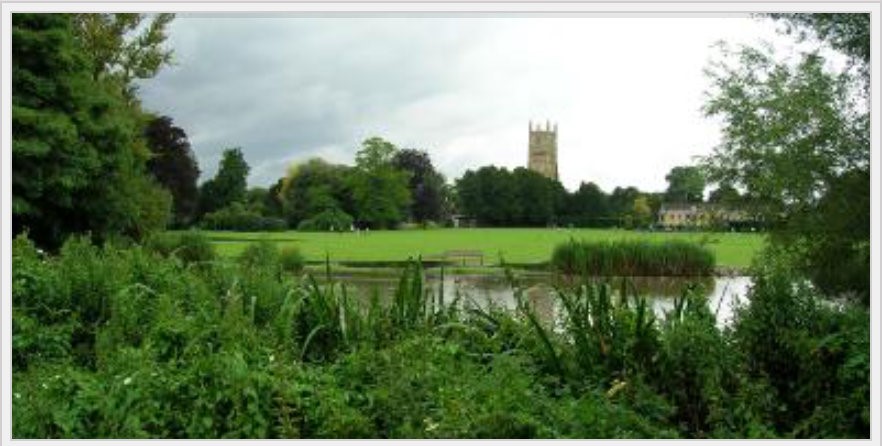
The Abbey Grounds
This extensive parkland behind Cirencester Parish Church was private land until the 1950s, when it was given to the Urban District Council (now the Town Council) by the Chester-Master family of Abbey Home Farm. As the name implies, a large abbey stood here until Henry VIII seized all church lands for himself. The Abbey was torn down, it is said the foundations of many town buildings were made from its stones. Its outline is now marked in stones set into the grass. A major project took place in 2017 to celebrate 900 years since the Abbey was founded in 1117. Money raised by this project paid for the statue of the abbey builders and the Monastic herb garden. The grounds also contain the only exposed part of the original Roman walls. The only remaining building from the Abbey period is the ‘Norman Arch’ at the northern end of the park. A good walk is to be had from here by crossing the dual carriageway on foot and continuing northwards into the ‘Hare Bushes’, a permissive path courtesy of Abbey Home Farm.
The Abbey of St Mary, Cirencester
With the Abbey 900 project now completed, we can see its l;ocatio0n in this image. We have also highlighted some of the early CAHS publications on their own page.
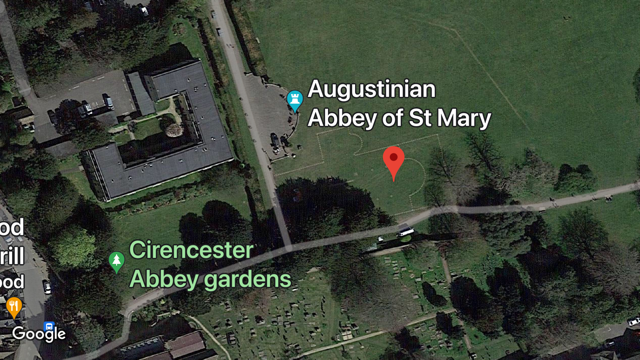
The following is an excerpt from a letter by Alan Welsford to the Wilts and Glos Standard, autumn 2016:
“Why Abbey 900? Dear Sir, Why “Abbey900”? asks one of your correspondents. Because the Abbey was more than just a building. Though little remains of the structures, there are fifty or more manuscripts which were once in the Abbey Library still extant, including the great Cartulary. The manuscripts were saved by one of Henry VIII’s commissioners who oversaw the Dissolution of the Abbey. These documents reveal the importance of the Abbey not only locally but nationally and in a European context.”
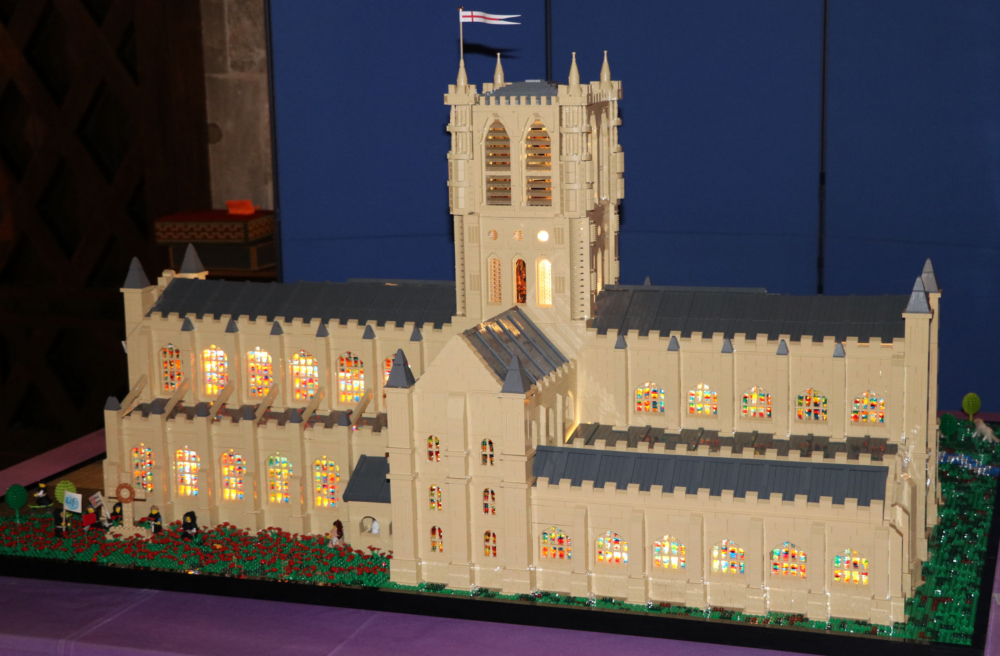
The Lego model can now be seen in all its glory in the St John the Baptist Church in the centre of CirencesterLego

Our Lego volunteers: Deidre Waddell, Anne Buffoni, Sheila Jones, Aileen Anderson, Jennifer Griffith, Sarah Marshall and Leslie Jones celebrate the completion of the model. Gary Cowley also helped.
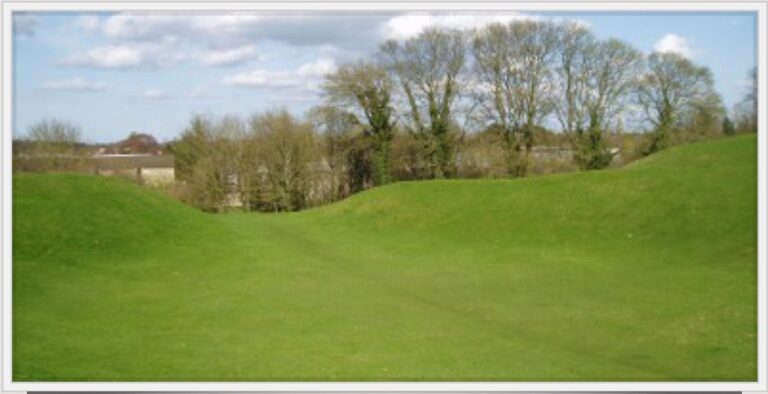
The Roman Amphitheatre
This was constructed during the 2nd century AD on the site of an existing Roman quarry (the workings of which can still be detected). It is situated SW of the Town Centre cut off by the ring road, near Waitrose, accessible from Cotswold Avenue. It is locally known as the Bullring, a title perhaps harking back to bull baiting in the 18th century. The arena is oval in shape with entrances at either end. A volunteer group AQIVA works to improve the area in conjunction with English Heritage (See the EH website for more information). They have cleared the surroundings of a more modern Obelisk nearby. There is an unverified Long Barrow sitting to the north.
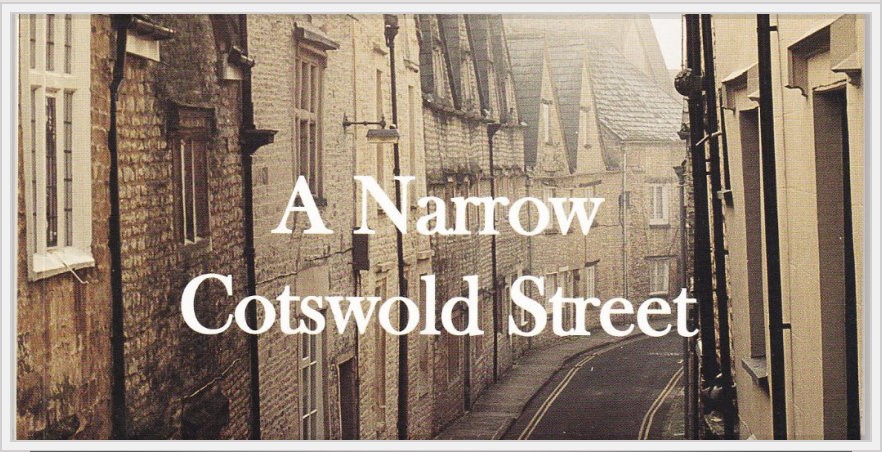
Coxwell Street
A beautiful and historic street, special for its grand houses and seventeenth century weavers’ cottages. Some time ago the local inhabitants put together a book about the the individual houses and history. As you walk down do not miss the early dates above many doors and the elegant wool merchant’s house at the end.
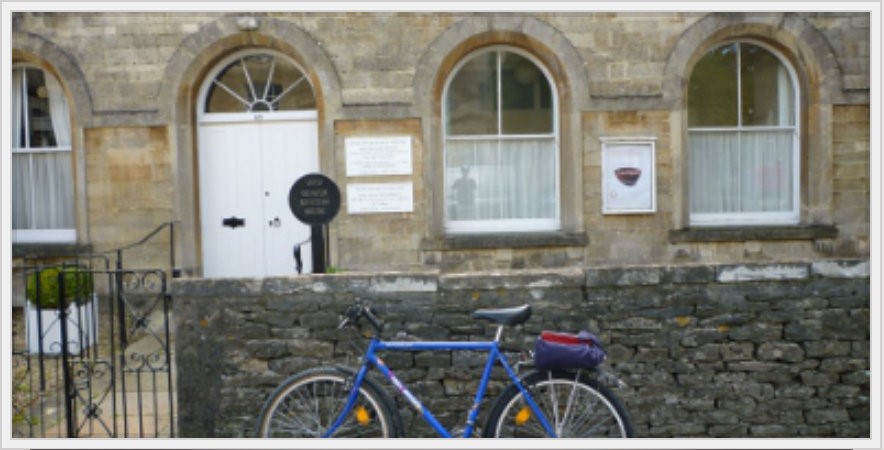
The Friends Meeting House, Thomas Street
Built in 1673 the Meeting House has been in continuous use ever since. One of the earliest of such buildings in the country, it has changed little over the centuries. Cirencester Quakers have had a considerable role in the town’s history. The large garden at the rear of the building was formerly the burial ground. The graves are still retained and a plan of the graveyard can be seen – the garden now forms a peaceful oasis amid the surrounding busy streets with a good view of the Parish Church and an attractive herbaceous border.
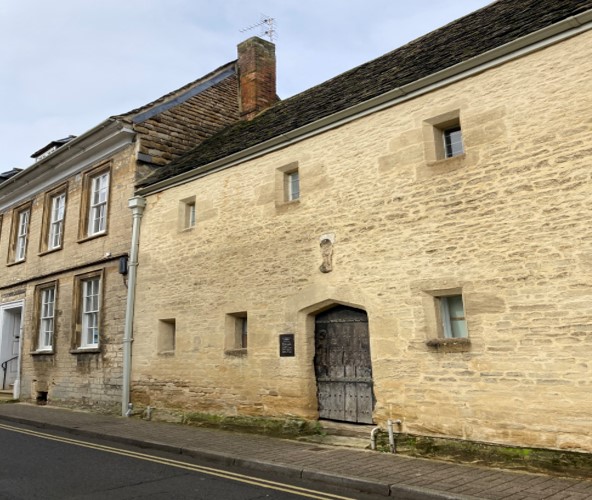
Weavers’ Hall, Thomas Street
‘The Weavers’ Company has provided almshouse accommodation in this building since it was built in the fifteenth century, making it the oldest building in Cirencester still in domestic use. Upstairs is an original large 1606 wall painting of the Royal Coat of Arms of James I. Keep an eye on this website for notifications of occasional public viewings in the summer months.’
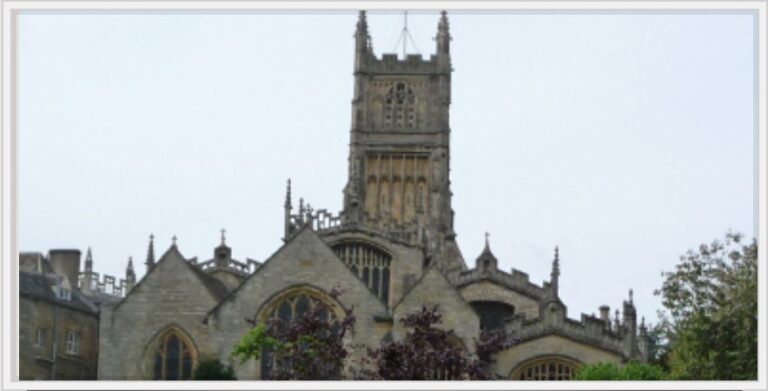
The Parish Church of St John Baptist
This view from the graveyard brings home the many phases of this building.
The usual view is from the Market Place showing the Town Hall or South Porch: a unique Grade 1 listed building of the 1490s. The Church cares for this secular structure which has been used by the people of Cirencester for over 500 years. Built by the Abbey for collecting rents and market dues, it has sometimes been called the oldest office block in England.
Guides are always available with much more information from the desk as you enter the church. Check the church website to see when the tower is open. There are articles in our Newsletters nos 8 and 9 about the church and churchyard.
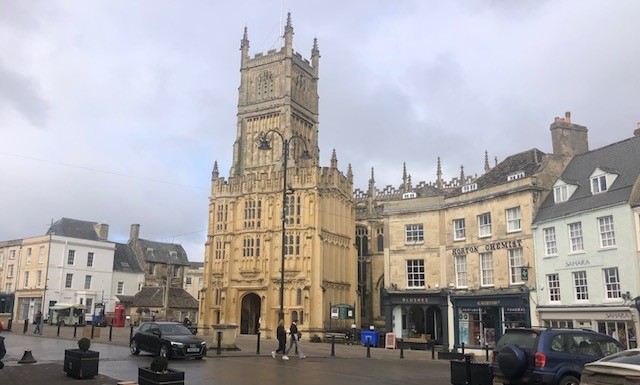
Cirencester Water Works Lewis Lane
The Cirencester Water Works Company was founded in 1882, but the building is probably slightly later. While sewers were apparently constructed slightly before then, there was no power to make occupants connect to them. The water became tainted from infiltration and the waterworks moved to Baunton in the 1930s (where it still is, though the supply is now augmented from elsewhere). The waterworks building had a number of later uses and is now part of a scheme of flats including the adjacent feed mill.
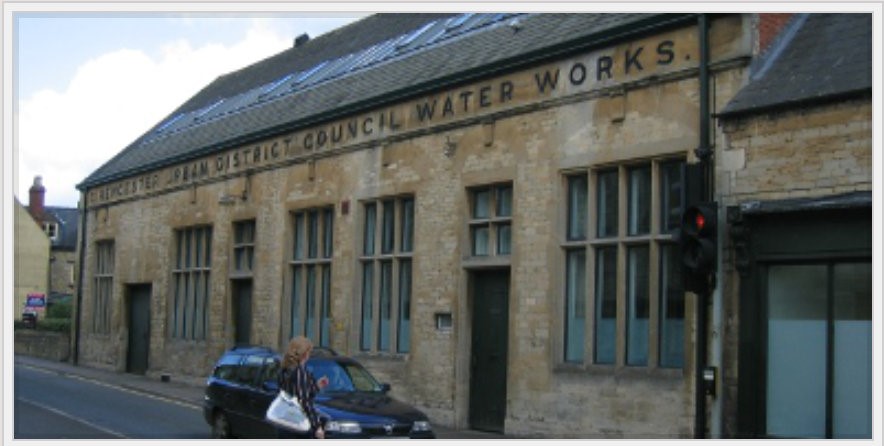
Bowly Almshouses, Watermoor Road
Just round the corner from the waterworks we find Watermoor Road, leading to the Victorian extension of the town. Here Christopher Bowly built a row of almshouses in the 1820s on both sides of the road. They shared a water pump which is still there.
